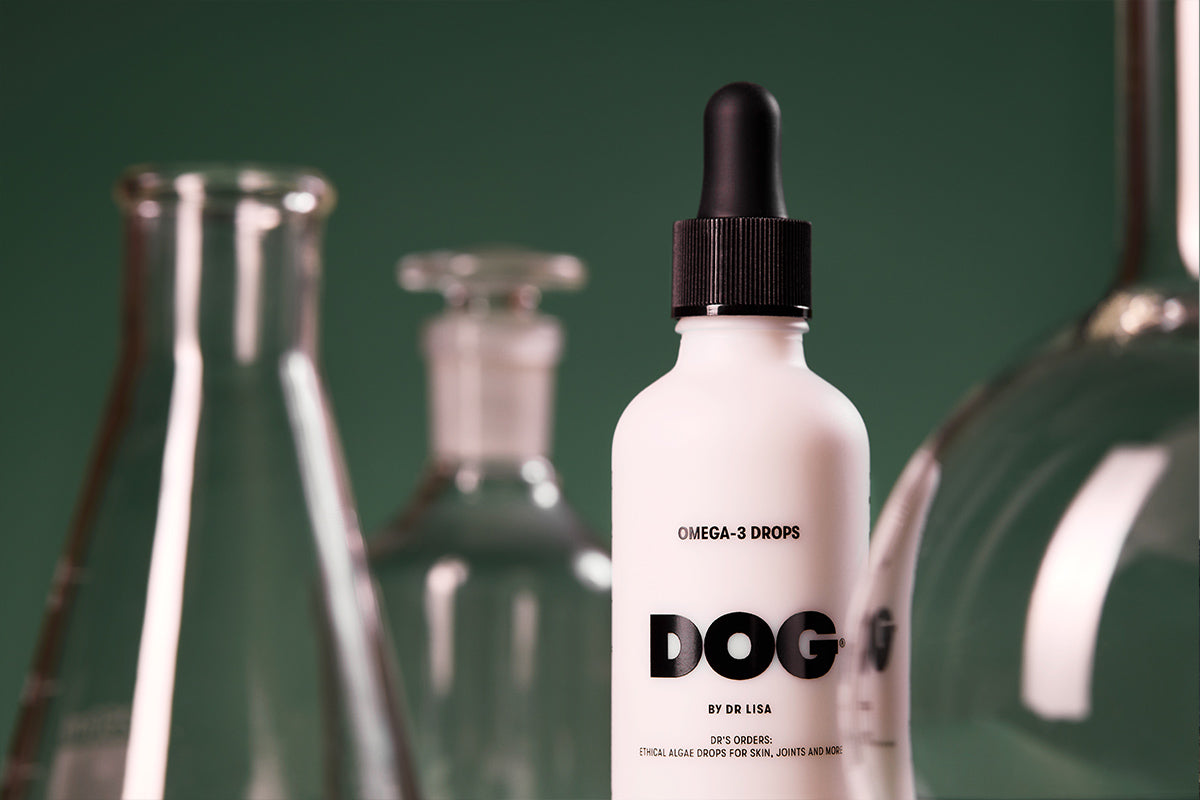What is arthritis?
Types of arthritis can include, immune-mediated arthritis (similar to rheumatoid arthritis) and septic arthritis (due to an infection in the joint). Osteoarthritis is more prevalent as dogs age, however, underlying congenital joint abnormalities and injuries can predispose them to developing arthritis when they are younger.
The joint is composed of cartilage that is made up of a protective, lubricated layer that helps the ends of the bones glide together smoothly. With arthritis, the smooth structure of this cartilage becomes inflamed and damaged, making it harder for bones to move together freely. This results in pain and a reduced range of motion for the joint. Any joint can be affected by arthritis, with the knees, hips, elbows and shoulders being the most common problem areas in dogs.
Signs of Osteoarthritis
There are four main stages of osteoarthritis.
Stage 1
This is pre-clinical osteoarthritis, before the development of symptoms. These dogs are at risk of osteoarthritis due to:
- Joint injury
- Intense exercise or activity
- Congenital abnormalities (e.g. hip or elbow dysplasia)
- Breed disposition
Stage 2
Mild osteoarthritis that affects mobility during certain activities such as running around the yard. Signs include a stiff gait, intermittent lameness, changes in walking or asymmetry of the body.
Stage 3
Signs of discomfort are more obvious and persistent. Dogs will be stiffer when walking, have more of a limp, and be less active. =
Stage 4
Severe degeneration of the joint often results in dogs being lethargic in attempt to avoid the pain associated with movement. They may be restless, and unable to find a comfortable position to rest. Lameness will be prominent and dogs will display an abnormal gait.. There may also be behavioural changes, such as increased aggression, reluctance to be touched and reduced social interaction.
Management of Osteoarthritis
Prevention is always best, so if your dog has an underlying congenital abnormality, or injury, it’s best to get it treated appropriately by your vet to reduce the likelihood of arthritis developing.
Once your dog has been diagnosed with with osteoarthritis, the following steps can be taken to reduce the progression of the disease and to make your dog feel as comfortable as possible:
Managing Body Weight
Keep your dog’s body condition lean. A slimmer body will put less pressure on the joints and will. The easiest way to encourage weight loss is to simply feed your dog less. Start by reducing their dietary intake by 10% and monitor the response with regular weight checks at your vet. There are also lower calorie dog foods available, so have a chat to your vet to see which is suitable for your dog. Keep treats to a minimum and consider low-fat options such as our Crumble.
Exercise
Daily exercise is important to maintain joint mobility and muscle strength. Types of activity should ideally be low impact, such as walking or swimming. If your dog has moderate to severe arthritis, its much better to break exercise sessions into several shorter intervals of 10-15 minutes spread over the day.
Physical Therapy
Physical therapy helps to improve range of motion and relieve pain. There are many types of physical therapy available, including hydrotherapy, massage. Your veterinarian or animal physiotherapist will be able to recommend the best type for your dog.
Prescription Medications
Your vet may prescribe anti-inflammatories that are safe for dogs, as well as other types of analgesics to help make your dog more comfortable.
Other options include slow acting disease modifying osteoarthritis drugs (SADMOADs). These include essential fatty acids, nutraceutical dietary supplements, polysulfated glycosaminoglycans and more. While deeper research is still ongoing in this area, there are some that have been proven to be more effective than others.
Supplements
Supplements can help reduce pain and inflammation, and may slow down the progression of the disease.
The ingredients in joint supplements are very important in ensuring their efficacy. It is key that they include high enough levels of essential ingredients based on scientifically-proven data in order to be beneficial. Some of the most effective ingredients in a joint supplement include essential fatty acids such as EPA and DHA, most commonly found in fish oil, or the more sustainable algal oil. Other commonly found ingredients include green-lipped muscle, glucosamine, chondroitin sulfate, MSM. With the vast array of supplements available, it can be difficult for owners to determine which type is best. Your vet will be able to properly advise on which joint supplement is most beneficial for your dog while minimising the risk of side effects. It is important to consult your vet prior to adding any supplements or making any major dietary changes.
1. Roush JK, Cross AR, Renberg WC et al. Evaluation of the effects of dietary supplementation with fish oil omega-3 fatty acids on weight bearing in dogs with osteoarthritis. Journal of the American Veterinary Medical Association 2010;236:67-73.







